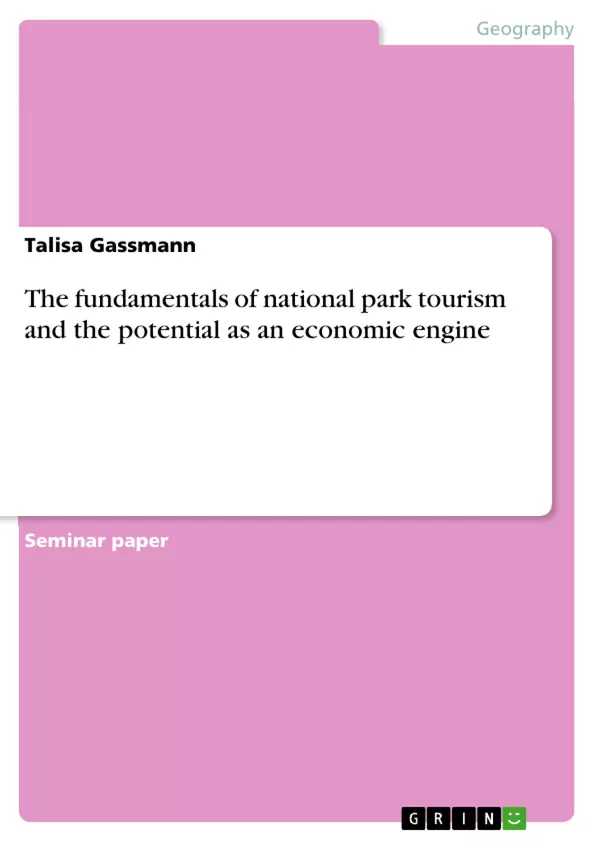The tourism industry was one of the fastest-expanding economic sectors before the coronavirus and continues to maintain its status as the world's dominant service industry. “(…) in 2019 alone, over 1.5 billion tourist arrivals were registered (…) with a growing importance of domestic tourism.” The interdependence between the increase in travel and the economic importance of tourism has been proven. Looking at the situation before the virus, it can be seen that the tourism industry contributed over 10% to global economic output. Furthermore, over 230 million jobs depend on tourism, which accounts for around 9% of global employment. As a result, it is no secret that the tourism industry is a highly profitable source of income and has the ability to combat poverty and stimulate the regional economy. The latter will be examined in more detail in the next section in order to create essential foundations for the further course of the work.
Since the focus of this work is on the United States, the aim is to provide a brief insight into the American tourism industry. When evaluating the overall economic production value of the tourism sector, the World Travel & Tourism Council was able to determine that the USA occupied first place by a significant margin in 2007 and was able to maintain this position 10 years later with an increase of 44.94 % . But when it comes to travel spending, Americans also took first place in 2005 with a total of around 82 billion dollars, and they took relatively significantly more trips within their home country. The reason for this lies primarily in the richness of the diverse climate zones and landscapes.
Inhaltsverzeichnis (Table of Contents)
- 1 Introduction
- 2 Theoretical Background
- 2.1 The economic importance of tourism
- 2.2 The Connection of national park and Tourism
- 2.2.1 Meaning and function
- 2.2.2 National park tourism as an economic engine
Zielsetzung und Themenschwerpunkte (Objectives and Key Themes)
This bachelor's thesis aims to investigate the economic impact of tourism in Joshua Tree National Park. It analyzes visitor numbers and trends, evaluates the economic impact, and discusses possible implications for policy and park management. The thesis explores the potential of sustainable tourism development in a national park setting, seeking to understand its effects on local populations and the overall economy.
- The economic importance of tourism in national parks
- The connection between national parks and tourism
- Sustainable tourism development in national parks
- The economic impact of tourism on local communities
- The impact of tourism on the quality of life in surrounding areas
Zusammenfassung der Kapitel (Chapter Summaries)
- Chapter 1: Introduction This chapter introduces the research topic, outlining the increasing competition for travelers and the importance of sustainable tourism development in national parks. It emphasizes the challenge of balancing economic benefits with quality of life preservation, particularly in sensitive areas like Joshua Tree National Park.
- Chapter 2: Theoretical Background This chapter delves into the theoretical framework surrounding the economic potential of tourism and the role of national parks in promoting economic growth. It explores the economic importance of tourism and the connections between national parks and tourism development.
Schlüsselwörter (Keywords)
The key concepts and themes explored in this thesis include national park tourism, sustainable tourism development, economic impact, quality of life, visitor numbers, trends, policy implications, and park management. The research focuses on the relationship between tourism and local communities, examining the effects of tourism on the local economy and the quality of life of residents.
- Citation du texte
- Talisa Gassmann (Auteur), 2024, The fundamentals of national park tourism and the potential as an economic engine, Munich, GRIN Verlag, https://www.grin.com/document/1442080



